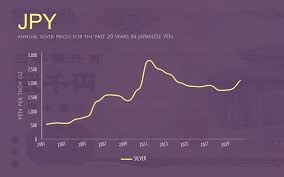Did you know that the highest price of silver reached an astonishing $49.45 per ounce in April 2011?
In this article, we’ll delve into the historical peaks and explore the factors behind silver’s record-breaking value.
We’ll also examine how this high price impacted investors and industries, compare silver to other precious metals, and speculate on whether silver will reach new price highs in the future.
Get ready for an insightful journey into the world of silver’s highest price.
Key Takeaways
- The highest price of silver in history reached almost $50 per ounce in January 1980.
- The peak was driven by the Hunt brothers’ attempt to corner the silver market, which ultimately failed.
- Supply and demand dynamics, limited supply, and economic factors all contribute to the record-breaking value of silver.
- The highest price of silver has had various impacts on industries, investors, and countries, both positive and negative.
Historical Peaks: Exploring the Highest Price of Silver Throughout History
You might be surprised to learn that the highest price of silver in history reached almost $50 per ounce. The peak occurred in January 1980 when the Hunt brothers attempted to corner the silver market.
This event caused a significant surge in silver prices, with the price skyrocketing from around $6 per ounce in late 1979 to nearly $50 in just a few months. The Hunt brothers, Nelson Bunker Hunt and William Herbert Hunt, accumulated a massive amount of silver futures contracts, effectively controlling a substantial portion of the market.
However, their attempt to manipulate the market ultimately failed, leading to a sharp decline in silver prices. Despite this, the peak of nearly $50 per ounce set in 1980 remains the highest price of silver in history to this day.
Factors Influencing Silver’s Price: Understanding the Forces Behind Silver’s Record-Breaking Value
If you want to understand why the value of silver has been breaking records, it’s important to consider the various factors that influence its price.
Silver, like any other commodity, is subject to market forces that drive its value. One key factor is supply and demand. Silver is used in a wide range of industries, including electronics and solar panels, which creates a constant demand. However, the supply of silver is limited, making it a precious metal.
Economic factors also play a role. In times of economic uncertainty, investors often turn to silver as a safe haven, driving up its price. Additionally, fluctuations in the value of the US dollar can impact the price of silver, as it’s traded in dollars.
All these factors combined contribute to the record-breaking value of silver we’re witnessing today.
The Impact on the Market: Examining How the Highest Price of Silver Affected Investors and Industries
The record-breaking value of silver has had a significant impact on both investors and industries. Here’s what you need to know about how the highest price of silver has affected the market:
- Investors have seen a surge in profits as the price of silver skyrocketed, leading to increased interest in silver as an investment option.
- Industries that rely on silver, such as electronics and solar panel manufacturing, have faced challenges due to the higher costs of raw materials.
- Silver mining companies have experienced a boost in production and profitability, as they capitalize on the increased demand and price of silver.
- The jewelry industry has had to adapt to the higher silver prices, with some opting for alternative materials or smaller silver pieces to manage costs.
- Some countries heavily dependent on silver exports have benefited economically, while others have faced inflationary pressures and trade imbalances.
Overall, the highest price of silver has created opportunities and challenges for investors and industries alike, reshaping the market dynamics and forcing stakeholders to adapt to the changing landscape.
Comparing Silver to Other Precious Metals: How Does Silver’s Highest Price Stack up Against Gold and Platinum
When comparing silver to gold and platinum, you’ll find that the highest price of silver has posed both advantages and disadvantages for investors and industries.
Silver, known for its affordability compared to gold and platinum, has seen a significant increase in its highest price in recent years. This has attracted investors looking for a more affordable alternative to the other precious metals.
Additionally, industries that rely on silver, such as electronics and solar panel manufacturing, have benefited from the higher price as it has increased the value of their products.
However, this increase in price has also posed challenges. The higher cost of silver has made it more difficult for industries to procure the necessary amount of silver for production, potentially impacting their profitability.
Furthermore, investors face the risk of market volatility and price fluctuations when investing in silver at its highest price.
Overall, the highest price of silver has both positive and negative implications for investors and industries alike.
Future Possibilities: Speculating on Whether Silver Will Reach New Price Highs in the Future
You might be wondering whether silver will reach new price highs in the future. As an investor, it’s important to analyze the current market trends and historical data to make informed speculations. Here are five factors to consider:
- Supply and demand dynamics: Increasing industrial demand for silver in sectors like electronics and renewable energy can drive up prices.
- Inflation and currency devaluation: Silver is often seen as a hedge against inflation and a store of value during times of economic uncertainty.
- Geopolitical tensions: Political instability and trade disputes can create market volatility, affecting silver prices.
- Global economic growth: As economies expand, the demand for silver in various industries may increase, potentially pushing prices higher.
- Investor sentiment: Sentiment among investors can impact silver prices, as market participants react to factors such as interest rates and market expectations.





